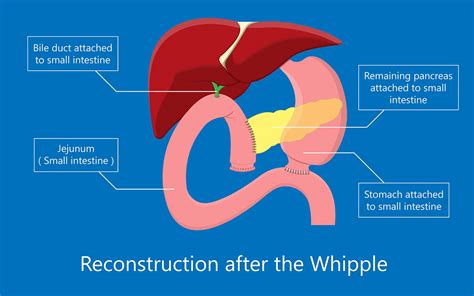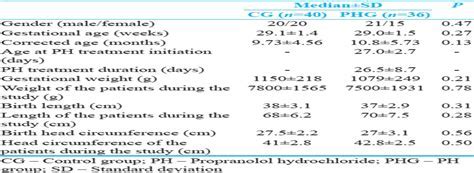Intro
Learn about Whipple Surgery, a complex pancreatic procedure, also known as Pancreaticoduodenectomy, for treating pancreatic cancer, tumors, and disorders, with detailed explanations of the operation, recovery, and potential complications.
The Whipple procedure, also known as a pancreaticoduodenectomy, is a complex surgical operation that involves the removal of the head of the pancreas, the duodenum, the gallbladder, and a portion of the bile duct. This surgery is typically performed to treat cancerous tumors in the pancreatic head or other conditions that affect the pancreas, duodenum, and surrounding tissues. The Whipple procedure is a major operation that requires a high level of skill and expertise, and it is usually performed by experienced surgeons in specialized centers.
The importance of the Whipple procedure lies in its ability to potentially cure certain types of cancer, such as pancreatic cancer, which is often diagnosed at an advanced stage. By removing the affected tissues and organs, surgeons can help prevent the spread of cancer and improve the patient's chances of survival. Additionally, the Whipple procedure can also be used to treat other conditions, such as benign tumors, cysts, and strictures, that affect the pancreas and duodenum. With advancements in surgical techniques and post-operative care, the Whipple procedure has become a safer and more effective treatment option for patients with pancreatic and periampullary disorders.
The Whipple procedure is a highly complex operation that requires careful planning and execution. Before undergoing the surgery, patients typically undergo a series of tests and evaluations to determine the extent of their disease and to assess their overall health. This may include imaging studies, such as CT scans and MRI, as well as blood tests and other diagnostic procedures. The surgeon will also discuss the potential risks and benefits of the procedure with the patient, as well as the expected outcomes and recovery time. By understanding the details of the Whipple procedure and what to expect, patients can make informed decisions about their treatment and take an active role in their care.
Indications for Whipple Surgery

Types of Cancer Treated with Whipple Surgery
The Whipple procedure is most commonly used to treat pancreatic adenocarcinoma, which is the most common type of pancreatic cancer. Other types of cancer that may be treated with the Whipple procedure include: * Ampullary cancer: a rare type of cancer that affects the ampulla of Vater, where the bile and pancreatic ducts empty into the duodenum * Cholangiocarcinoma: a type of cancer that affects the bile ducts * Duodenal cancer: a rare type of cancer that affects the duodenum * Periampullary cancer: a type of cancer that affects the tissues surrounding the ampulla of VaterPreoperative Evaluation and Preparation

Preoperative Preparation
In addition to the preoperative evaluation, patients may also undergo preoperative preparation to optimize their health and reduce the risk of complications. This may include: * Bowel preparation, to cleanse the bowel and reduce the risk of infection * Nutrition counseling, to ensure that the patient is receiving adequate nutrition and to optimize their weight * Smoking cessation, to reduce the risk of complications and to improve overall health * Medication management, to optimize the patient's medications and to reduce the risk of interactionsSurgical Technique

Steps of the Whipple Procedure
The Whipple procedure typically involves the following steps: 1. Dissection of the pancreas and duodenum, to mobilize the affected tissues and organs 2. Ligation of the blood vessels, to control bleeding and to prevent complications 3. Removal of the head of the pancreas, the duodenum, the gallbladder, and a portion of the bile duct 4. Reconstruction of the gastrointestinal tract, to restore continuity and to allow for normal digestion and absorption 5. Anastomosis of the bile duct, to restore bile flow and to prevent complicationsPostoperative Care and Recovery

Common Complications of Whipple Surgery
While the Whipple procedure is generally safe and effective, it is not without risks and complications. Common complications of Whipple surgery include: * Bleeding and hemorrhage * Infection and sepsis * Pancreatic fistula, a condition in which the pancreas leaks digestive enzymes into the abdomen * Delayed gastric emptying, a condition in which the stomach takes too long to empty its contents into the small intestineLong-term Outcomes and Prognosis

Factors that Affect Long-term Outcomes
Several factors can affect the long-term outcomes and prognosis for patients who undergo the Whipple procedure. These include: * Type and stage of cancer: patients with earlier-stage cancer tend to have better outcomes than those with later-stage cancer * Patient's overall health: patients who are in good overall health tend to have better outcomes than those with underlying medical conditions * Presence of complications: patients who experience complications, such as bleeding or infection, tend to have poorer outcomes than those who do not * Adjuvant therapy: patients who receive adjuvant therapy, such as chemotherapy or radiation, tend to have better outcomes than those who do notWhat is the Whipple procedure?
+The Whipple procedure, also known as a pancreaticoduodenectomy, is a complex surgical operation that involves the removal of the head of the pancreas, the duodenum, the gallbladder, and a portion of the bile duct.
What are the indications for Whipple surgery?
+The Whipple procedure is typically indicated for patients with cancerous tumors in the pancreatic head, duodenum, or surrounding tissues.
What are the potential risks and complications of Whipple surgery?
+Potential risks and complications of Whipple surgery include bleeding, infection, pancreatic fistula, and delayed gastric emptying.
We hope this article has provided you with a comprehensive understanding of the Whipple procedure and its role in treating pancreatic and periampullary disorders. If you have any further questions or concerns, please do not hesitate to reach out to your healthcare provider or a qualified medical professional. Additionally, we encourage you to share this article with others who may be interested in learning more about the Whipple procedure and its potential benefits and risks. By working together and staying informed, we can promote better health outcomes and improve the lives of those affected by pancreatic and periampullary disorders.
